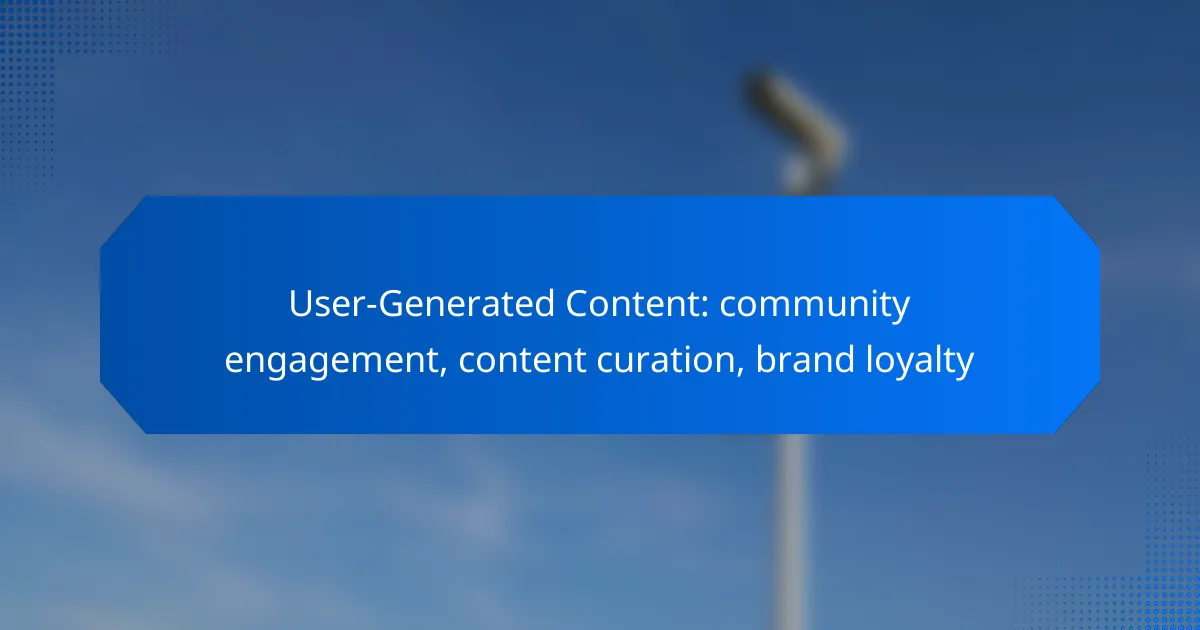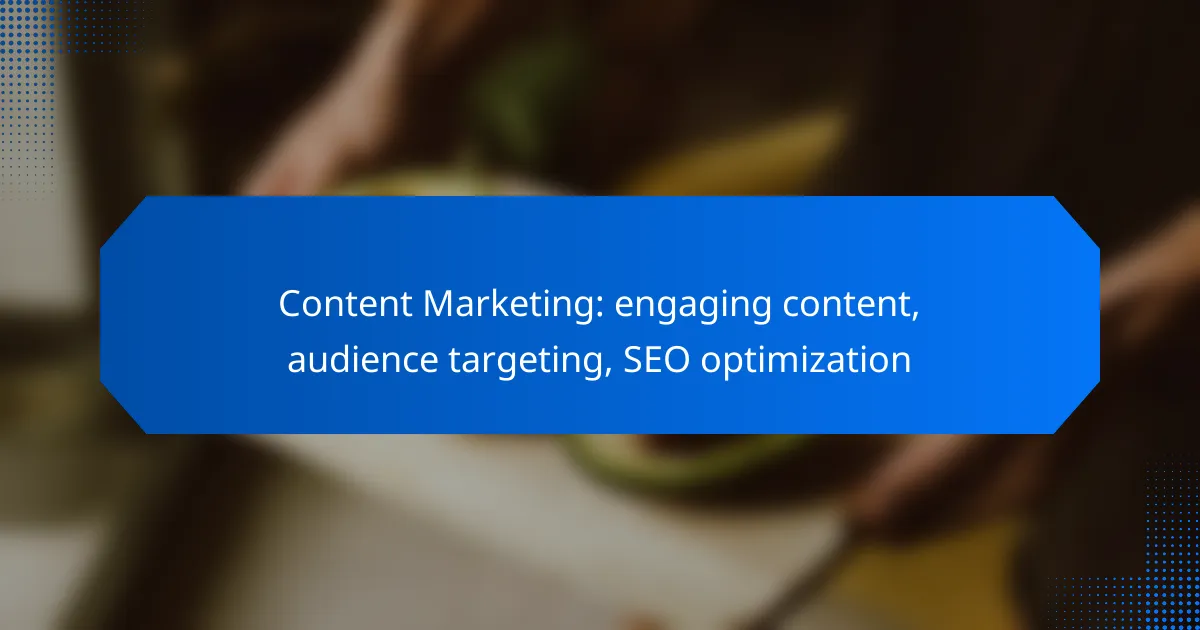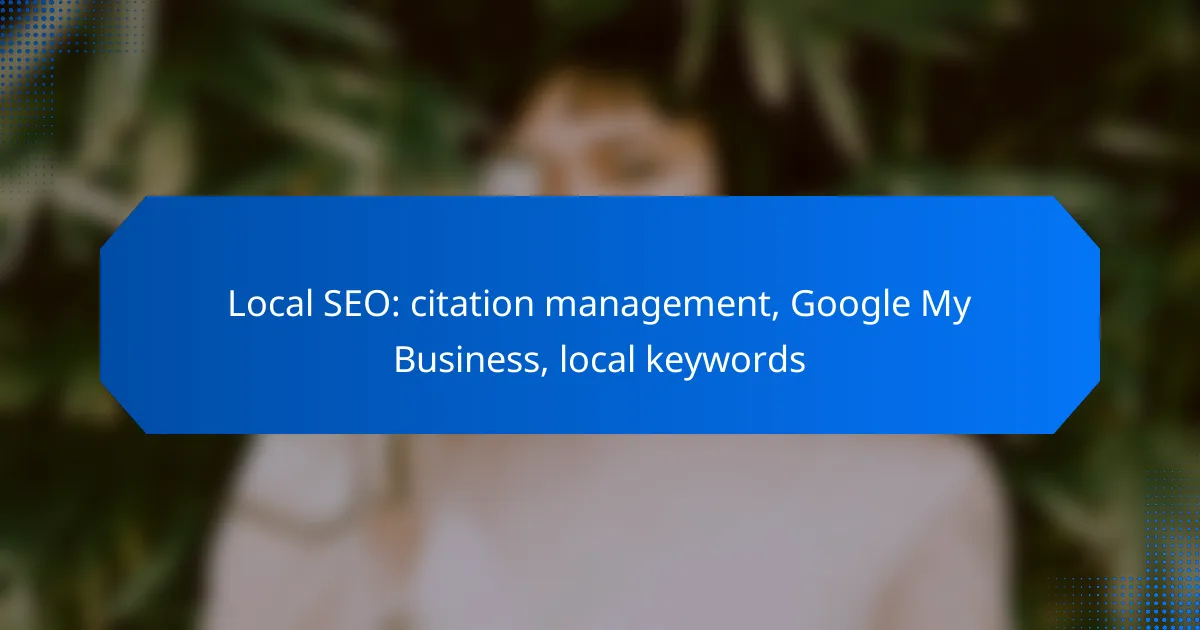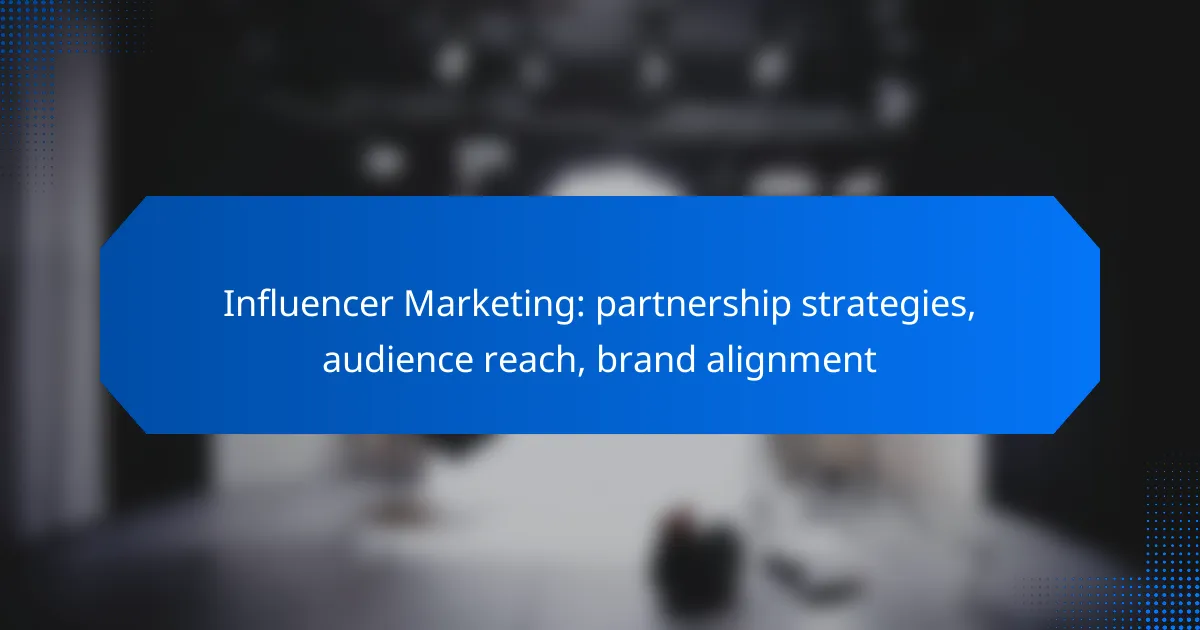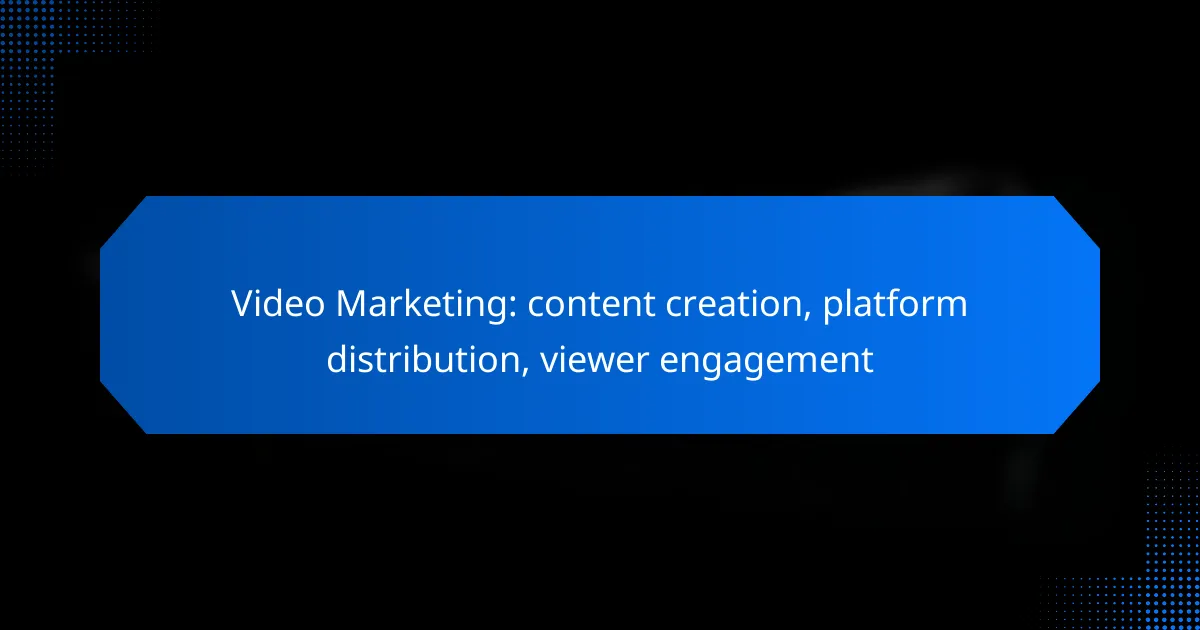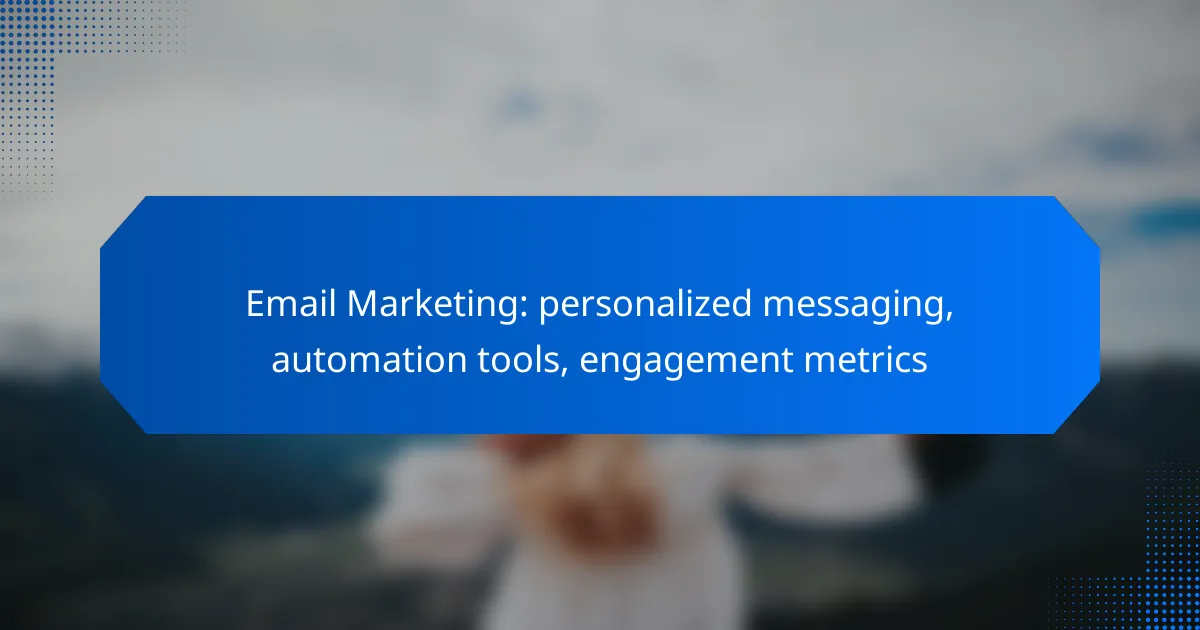Effective Digital Marketing Techniques
Effective digital marketing techniques are essential for businesses looking to thrive in the online landscape. Strategies such as Search Engine Optimization (SEO), Pay-Per-Click Advertising (PPC), and Social Media Marketing not only enhance visibility but also engage and convert customers. By leveraging these techniques alongside powerful tools for analytics and management, companies can optimize their marketing efforts and achieve better results.
Affiliate Marketing: commission structures, partner selection, performance analysis
Affiliate marketing is a dynamic strategy that allows businesses to leverage partnerships for increased sales and brand exposure. Understanding commission structures is crucial, as they dictate how affiliates earn and can significantly impact both earnings and costs. Additionally, selecting the right partners and conducting thorough performance analysis are essential for maximizing the effectiveness of affiliate […]
User-Generated Content: community engagement, content curation, brand loyalty
User-generated content (UGC) plays a crucial role in enhancing community engagement by promoting direct interactions between brands and consumers. By encouraging participation in content creation, brands can strengthen relationships and foster loyalty among their audience. Additionally, effective content curation allows brands to share valuable information, further building trust and community around shared experiences. How does […]
Content Marketing: engaging content, audience targeting, SEO optimization
Content marketing is essential for connecting with your audience through engaging and relevant narratives. By understanding cultural nuances and employing effective audience targeting strategies, marketers can tailor their messages to resonate deeply with specific consumer groups. Additionally, optimizing content for SEO through keyword integration and enhancing site performance ensures increased visibility and traffic, ultimately driving […]
Local SEO: citation management, Google My Business, local keywords
Effective local SEO hinges on proper citation management, which boosts your business’s visibility in local search results. Utilizing Google My Business is essential, as it allows you to manage your online presence and connect with potential customers. By optimizing your profile with accurate information and relevant local keywords, you can significantly enhance your chances of […]
Analytics Tracking: data collection, performance metrics, strategy adjustment
Analytics tracking is essential for optimizing display advertising efforts, enabling marketers to collect valuable data and measure key performance metrics. By utilizing tools like Google Analytics 4 and Adobe Analytics, advertisers can set up tracking codes and define conversion goals to gain insights into campaign performance. This data-driven approach allows for strategic adjustments that enhance […]
Influencer Marketing: partnership strategies, audience reach, brand alignment
Influencer marketing has emerged as a powerful strategy for brands looking to enhance their audience reach and establish meaningful connections. By partnering with influencers who align with their values and target demographics, brands can create authentic collaborations that resonate with consumers. Successful partnerships require clear objectives, strategic platform selection, and a focus on measurable outcomes […]
Video Marketing: content creation, platform distribution, viewer engagement
Video marketing is a powerful tool for businesses looking to connect with their audience in Australia. By creating high-quality content tailored to specific platforms like YouTube and Instagram, companies can enhance viewer engagement and drive conversions. Fostering interactive experiences and leveraging audience data are key strategies to deepen connections and encourage participation. How to create […]
Email Marketing: personalized messaging, automation tools, engagement metrics
Email marketing thrives on personalized messaging, which tailors content to individual preferences, resulting in higher engagement and conversion rates. Utilizing automation tools streamlines the process of sending these targeted messages while effectively managing campaigns and analyzing engagement metrics. By tracking key metrics such as open rates and click-through rates, businesses can gain valuable insights into […]
Retargeting Campaigns: audience segmentation, ad placement, conversion tracking
Retargeting campaigns are a powerful tool for marketers, allowing them to reconnect with potential customers through strategic audience segmentation. By tailoring ads to specific groups and utilizing optimal placements across various platforms, businesses can significantly enhance engagement and conversion rates. Additionally, effective conversion tracking is crucial for evaluating the success of these campaigns, enabling marketers […]
PPC Advertising: budget management, ad targeting, ROI tracking
PPC advertising is a powerful tool for businesses looking to enhance their online presence, but effective budget management is crucial for success. By setting clear financial limits and employing automated strategies, advertisers can ensure their spending aligns with business objectives while maximizing return on investment (ROI). Additionally, precise ad targeting and diligent ROI tracking are […]
What are the most effective digital marketing techniques in Australia?
The most effective digital marketing techniques in Australia include Search Engine Optimization (SEO), Pay-Per-Click Advertising (PPC), Social Media Marketing, Email Marketing, and Content Marketing. Each technique plays a crucial role in enhancing online visibility, driving traffic, and engaging customers.
Search Engine Optimization (SEO)
SEO involves optimizing your website to rank higher in search engine results, making it easier for potential customers to find you. Key components include keyword research, on-page optimization, and building backlinks. In Australia, focusing on local SEO can significantly enhance visibility among nearby customers.
To improve your SEO, ensure your website is mobile-friendly, loads quickly, and contains relevant content. Tools like Google Analytics can help track performance and identify areas for improvement. Avoid keyword stuffing, as it can lead to penalties from search engines.
Pay-Per-Click Advertising (PPC)
PPC is a model where advertisers pay a fee each time their ad is clicked, making it a cost-effective way to drive traffic. Google Ads is a popular platform for PPC in Australia, allowing businesses to target specific demographics and locations. Setting a clear budget is essential to manage costs effectively.
When creating PPC campaigns, focus on compelling ad copy and relevant keywords to improve click-through rates. Regularly review and adjust your campaigns based on performance metrics to maximize return on investment. Avoid broad targeting to prevent wasted ad spend.
Social Media Marketing
Social Media Marketing involves promoting your brand on platforms like Facebook, Instagram, and LinkedIn. In Australia, engaging content tailored to the audience can foster community and brand loyalty. Regular posting and interaction with followers are key to maintaining visibility.
Utilize analytics tools to track engagement and adjust your strategy accordingly. Consider running targeted ads to reach specific demographics. Avoid neglecting customer feedback, as responding to comments can enhance your brand’s reputation.
Email Marketing
Email Marketing is a direct way to communicate with customers, promoting products, services, or content. Building a quality email list is crucial, as targeted emails can yield high conversion rates. In Australia, compliance with the Spam Act 2003 requires obtaining consent before sending marketing emails.
Segment your email list to tailor content to different customer groups, increasing relevance and engagement. Use clear calls to action and compelling subject lines to improve open rates. Avoid sending too many emails, as this can lead to unsubscribes.
Content Marketing
Content Marketing focuses on creating valuable content to attract and engage a target audience. This can include blog posts, videos, infographics, and more. In Australia, high-quality content that addresses local interests can significantly enhance brand authority and customer trust.
Develop a content strategy that aligns with your audience’s needs and preferences. Regularly update your content to keep it fresh and relevant. Avoid creating content solely for SEO purposes; prioritize value and authenticity to build lasting relationships with your audience.
How can display advertising enhance digital marketing?
Display advertising can significantly enhance digital marketing by increasing brand awareness and driving targeted traffic to websites. By utilizing visual ads across various platforms, businesses can effectively reach potential customers and improve their overall marketing strategy.
Targeted Audience Reach
Display advertising allows businesses to target specific demographics based on interests, behaviors, and geographic locations. This targeted approach ensures that ads are shown to users who are more likely to engage with the brand, increasing the chances of conversion.
Utilizing tools like Google Ads or Facebook Ads, marketers can define their audience criteria, such as age, gender, and location, to maximize the effectiveness of their campaigns. Regularly analyzing audience performance can help refine targeting strategies over time.
Brand Visibility
One of the primary benefits of display advertising is the enhancement of brand visibility. By placing ads on popular websites and social media platforms, brands can maintain a consistent presence in front of potential customers.
Effective display ads often include eye-catching visuals and clear messaging that resonate with the target audience. Brands should consider using a mix of static and animated ads to capture attention and convey their value proposition effectively.
Retargeting Strategies
Retargeting strategies in display advertising allow businesses to re-engage users who have previously visited their website but did not convert. By displaying tailored ads to these users, brands can remind them of their products or services, encouraging them to return and complete their purchase.
Implementing retargeting campaigns can be done through platforms like Google Ads or social media networks. It is crucial to balance the frequency of retargeted ads to avoid overwhelming potential customers while keeping the brand top-of-mind.
What tools can optimize digital marketing campaigns?
Several tools can significantly enhance the effectiveness of digital marketing campaigns by providing insights, analytics, and management capabilities. Utilizing these tools can streamline processes, improve targeting, and ultimately increase return on investment.
Google Analytics
Google Analytics is a powerful tool for tracking and analyzing website traffic. It provides insights into user behavior, demographics, and conversion rates, allowing marketers to make data-driven decisions.
To optimize your campaigns, set up goals and track key performance indicators (KPIs) such as bounce rates and average session duration. Regularly review your reports to identify trends and adjust your strategies accordingly.
SEMrush
SEMrush is an all-in-one marketing toolkit that focuses on SEO, PPC, and content marketing. It offers features like keyword research, site audits, and competitor analysis, helping marketers refine their strategies.
When using SEMrush, prioritize keyword optimization and monitor your competitors’ performance. This can help you identify gaps in your strategy and capitalize on opportunities in your niche.
Hootsuite
Hootsuite is a social media management platform that allows users to schedule posts, track engagement, and analyze performance across multiple social channels. This tool is essential for maintaining a consistent online presence.
To maximize Hootsuite’s effectiveness, create a content calendar and use analytics to determine the best times to post. Regularly engage with your audience to foster community and enhance brand loyalty.
What are the key metrics for measuring success?
Key metrics for measuring success in digital marketing include Click-Through Rate (CTR), Conversion Rate, and Return on Investment (ROI). These metrics provide insights into campaign performance and help marketers make data-driven decisions.
Click-Through Rate (CTR)
Click-Through Rate (CTR) measures the percentage of users who click on a specific link compared to the total number of users who view a page, email, or advertisement. A higher CTR indicates effective messaging and targeting.
To calculate CTR, divide the number of clicks by the number of impressions and multiply by 100. For example, if an ad received 200 clicks from 10,000 impressions, the CTR would be 2%. Aim for a CTR of 2-5% for most online ads, but this can vary by industry.
Common pitfalls include using vague calls to action or targeting the wrong audience, which can lead to lower CTR. Regularly test different ad copies and formats to optimize performance.
Conversion Rate
The Conversion Rate measures the percentage of users who complete a desired action, such as making a purchase or signing up for a newsletter. This metric is crucial for assessing the effectiveness of your marketing efforts.
To calculate the Conversion Rate, divide the number of conversions by the total number of visitors and multiply by 100. For instance, if your website had 1,000 visitors and 50 made a purchase, the conversion rate would be 5%. A good conversion rate typically ranges from 1-5%, depending on the industry.
To improve conversion rates, focus on enhancing user experience, simplifying the checkout process, and ensuring that your value proposition is clear. Avoid cluttered designs that can distract visitors from taking action.
Return on Investment (ROI)
Return on Investment (ROI) is a key metric that evaluates the profitability of a marketing campaign by comparing the revenue generated to the costs incurred. A positive ROI indicates that the campaign is financially successful.
To calculate ROI, subtract the total marketing costs from the total revenue generated, then divide by the total marketing costs and multiply by 100. For example, if a campaign costs $1,000 and generates $5,000 in revenue, the ROI would be 400%. Aim for an ROI of at least 100% to ensure that your marketing efforts are worthwhile.
Be cautious of focusing solely on short-term ROI, as some campaigns may require time to yield results. Consider the long-term value of customer relationships and brand awareness when evaluating ROI. Regularly review and adjust your strategies based on performance data to maximize returns.
How to choose the right digital marketing strategy?
Choosing the right digital marketing strategy involves understanding your business goals, target audience, and available resources. A well-defined approach can enhance engagement and drive conversions effectively.
Identify Target Audience
Identifying your target audience is crucial for tailoring your digital marketing efforts. Start by analyzing demographics such as age, gender, location, and interests to create a detailed customer profile.
Utilize tools like Google Analytics and social media insights to gather data on user behavior. This information helps in crafting personalized messages that resonate with your audience, ultimately increasing engagement.
Set Clear Objectives
Setting clear objectives is essential for measuring the success of your digital marketing strategy. Define specific, measurable, achievable, relevant, and time-bound (SMART) goals to guide your efforts.
For example, aim to increase website traffic by 20% within six months or generate 50 new leads per month. Clear objectives provide direction and help in assessing the effectiveness of your campaigns.
Budget Considerations
Budget considerations play a significant role in shaping your digital marketing strategy. Determine how much you can allocate to various channels such as social media, email marketing, or pay-per-click advertising.
As a guideline, businesses often allocate around 7-10% of their revenue to marketing. Monitor your spending and adjust as necessary to ensure you are getting a good return on investment.
What are the emerging trends in digital marketing?
Emerging trends in digital marketing include the increasing use of artificial intelligence, personalization, and video content. These trends are shaping how businesses engage with customers and optimize their marketing strategies.
Artificial Intelligence in Marketing
Artificial intelligence (AI) is transforming digital marketing by enabling more efficient data analysis and customer interaction. AI tools can automate tasks such as customer segmentation, predictive analytics, and personalized content delivery, making marketing efforts more effective.
For example, chatbots powered by AI can provide 24/7 customer support, answering queries and guiding users through the sales process. Businesses should consider integrating AI solutions to enhance customer experiences and streamline operations.
Personalization Strategies
Personalization is becoming essential in digital marketing, as consumers increasingly expect tailored experiences. By leveraging data analytics, businesses can create customized content and offers that resonate with individual preferences and behaviors.
To implement effective personalization, companies should collect and analyze customer data, segment their audience, and deliver targeted messages through various channels. Avoid generic marketing approaches, as they often lead to lower engagement rates.
Video Content Dominance
Video content continues to dominate digital marketing, with platforms like YouTube and social media favoring video formats. Engaging videos can capture attention quickly and convey messages more effectively than text or images alone.
Brands should focus on creating high-quality video content that tells a story or provides valuable information. Short-form videos, such as those on TikTok or Instagram Reels, can be particularly effective in reaching younger audiences. Aim for videos that are concise and engaging to maximize viewer retention.

